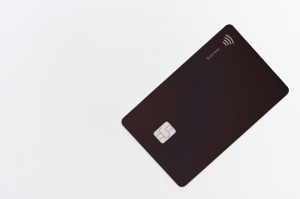Hemifacial spasm is a neurological condition characterized by involuntary muscle contractions on one side of the face. These spasms can be both distressing and debilitating, significantly impacting the quality of life for those affected. Understanding the available treatment options is crucial for individuals seeking relief from this condition. This guide aims to provide an in-depth overview of the various treatments available for hemifacial spasm, focusing on both non-invasive and surgical approaches.
Understanding Hemifacial Spasm
To grasp the treatment options effectively, it's essential to comprehend what hemifacial spasm entails. This condition typically arises from irritation or compression of the facial nerve, often due to nearby blood vessels exerting pressure. The first noticeable symptoms can include twitching around the eye, which may progress to involuntary movements of the mouth and other facial muscles. The unpredictability of these spasms not only causes physical discomfort but can also lead to emotional distress, as individuals may feel self-conscious or anxious about their appearance.
Diagnosis involves a thorough neurological examination, often supplemented with imaging studies to rule out underlying causes. Once diagnosed, patients can explore various treatment avenues tailored to their specific needs and the severity of their symptoms.
Non-Invasive Treatment Options
For many individuals, non-invasive treatments can provide significant relief from the symptoms of hemifacial spasm. One of the most common approaches is the use of botulinum toxin injections, commonly known by its brand names. These injections work by temporarily blocking the nerve signals that cause muscle contractions. Administered directly into the affected muscles, botulinum toxin can effectively reduce the frequency and intensity of spasms, offering patients a respite from their symptoms.
The effects of the injections typically last for several months, requiring repeat treatments to maintain the benefits. While this method is generally well-tolerated, patients may experience mild side effects, such as temporary bruising or weakness in the injected area. However, the overall safety profile of botulinum toxin makes it a popular choice among healthcare providers for managing hemifacial spasm.
In addition to injections, physical therapy may complement treatment efforts. Specific exercises and techniques can help individuals regain control over their facial muscles and reduce the impact of spasms. A trained physical therapist can devise a personalized program that focuses on relaxation techniques and muscle retraining, empowering patients to manage their symptoms more effectively.
Surgical Options for Hemifacial Spasm
For patients who do not respond adequately to non-invasive treatments, surgical options may be considered. One prominent surgical intervention is microvascular decompression (MVD), which aims to alleviate the pressure on the facial nerve. During this procedure, a surgeon accesses the skull and identifies blood vessels that may be compressing the nerve. By repositioning or removing these vessels, the surgery aims to restore normal function and significantly reduce or eliminate spasms.
Microvascular decompression is often regarded as a definitive solution for hemifacial spasm, with many patients experiencing long-term relief following the procedure. However, as with any surgery, there are risks involved, including complications related to anesthesia and the potential for new neurological symptoms. A thorough consultation with a qualified healthcare provider is essential to weigh the benefits and risks associated with surgical intervention.
Another surgical option includes nerve sectioning, which involves cutting the facial nerve to interrupt the abnormal signals causing spasms. While this procedure can provide relief, it may also result in some loss of muscle function on the affected side of the face, making it a less favorable option for many patients.
Lifestyle Adaptations and Support Systems
In addition to medical treatments, lifestyle adaptations can play a significant role in managing hemifacial spasm. Stress is a known trigger for muscle spasms, so implementing stress-reduction techniques such as mindfulness, meditation, and regular exercise can be beneficial. Additionally, maintaining a healthy diet and staying hydrated contributes to overall well-being, which may indirectly reduce the severity of symptoms.
Support groups and counseling can also provide invaluable assistance for individuals coping with hemifacial spasm. Connecting with others who understand the challenges of this condition fosters a sense of community and can lead to shared coping strategies. Emotional support is crucial, as the psychological impact of living with hemifacial spasm can be profound.
Conclusion: Seeking Professional Guidance
Navigating the landscape of hemifacial spasm treatment requires a comprehensive understanding of the available options. From non-invasive treatments like botulinum toxin injections to surgical interventions such as microvascular decompression, individuals have various paths to explore in their journey toward relief. It is essential to approach treatment with the guidance of a qualified healthcare professional who can tailor recommendations to individual needs.
For those seeking expert care and personalized treatment plans, Robert Louis MD stands ready to assist. With a commitment to understanding each patient's unique circumstances, Robert Louis MD offers a compassionate and professional approach to managing hemifacial spasm. By prioritizing patient well-being, Robert Louis MD ensures that individuals receive the support they need to reclaim their quality of life.





